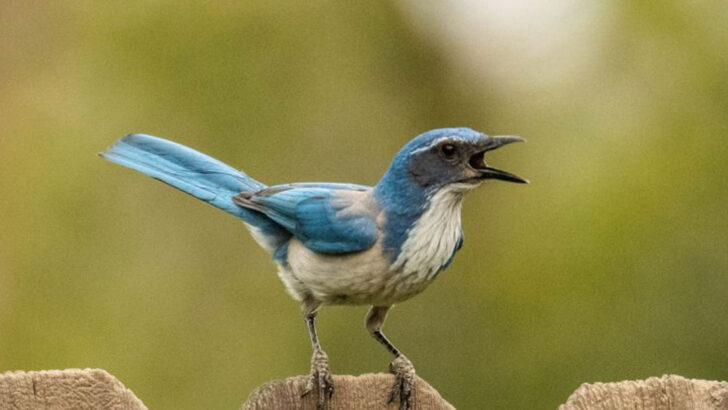California isn’t just a hotspot for surfers and movie stars—it’s bird paradise.
From backyard feeders to coastal cliffs, the skies here are buzzing with color, sound, and pure feathered flair. These birds don’t migrate just to chill—they move in. They raise families, flash their wings, and steal snacks like pros.
You’ll spot bright blue show-offs, high-speed hunters, and tiny daredevils flitting through the trees like they own the place.
And honestly? They kind of do.
Whether you’re a casual stroller or a hardcore binocular-wielding birder, these are the stars of the year-round California sky—bold, beautiful, and impossible to ignore.
American Robin
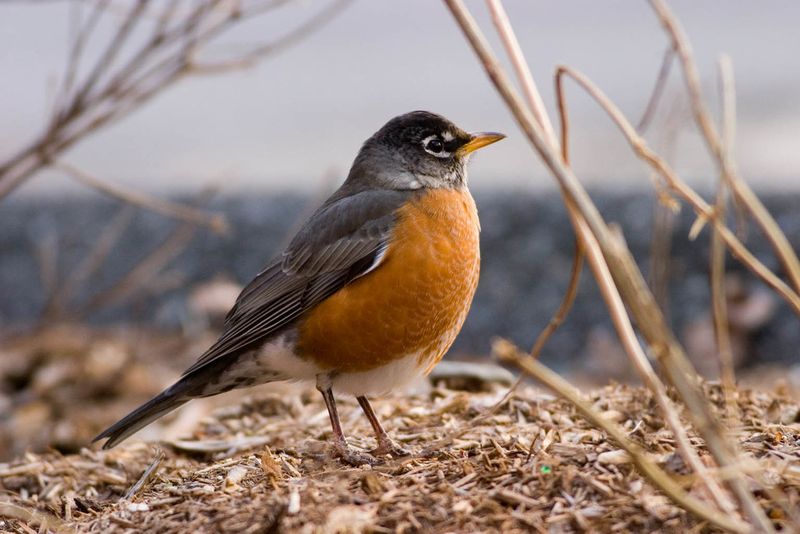
The American Robin, with its vibrant red breast, is a common sight in California’s gardens and parks. Known for its cheerful song, this bird often heralds the arrival of spring. In winter, robins gather in large flocks, creating a spectacular view.
Their diet mainly consists of insects and berries, making them a helpful presence in maintaining garden ecosystems. These birds are also known for their early morning feeding habits.
Did you know? The American Robin is the state bird of Connecticut, Michigan, and Wisconsin, highlighting its widespread popularity.
California Quail
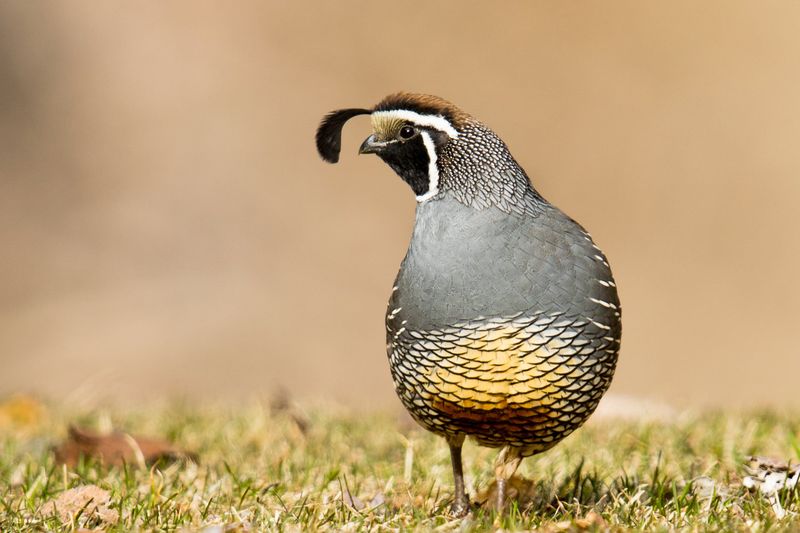
The California Quail, with its distinct topknot, is the state bird and a symbol of the Golden State. These plump, ground-dwelling birds are often seen in groups as they forage together.
They are known for their unique call, which sounds like they are saying “Chicago.” Quails thrive in open woodlands and grasslands, where they feed on seeds and leaves.
Fun fact: Despite their preference for walking, California Quails can fly short distances to escape predators, showcasing their agility and survival skills.
Anna’s Hummingbird
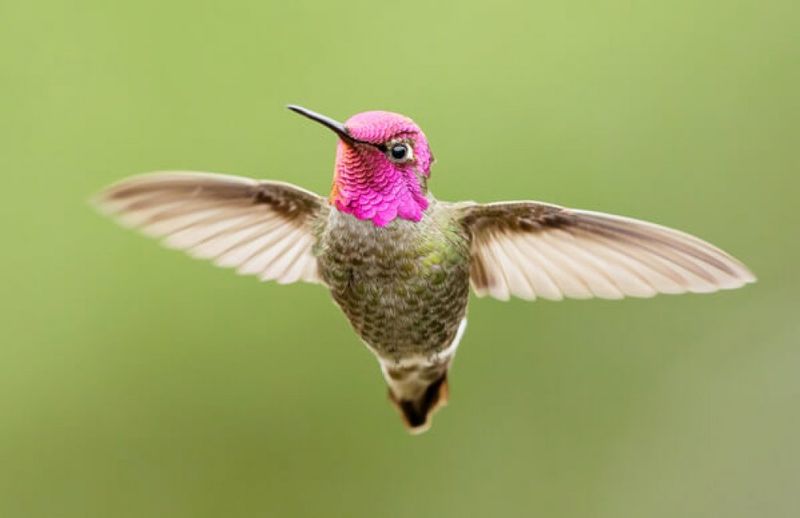
Anna’s Hummingbird is a tiny jewel often seen flitting around California’s gardens. With their shimmering green and pink feathers, they’re a delight to watch. These hummingbirds are known for their acrobatic flight and ability to hover in place.
They play a crucial role in pollination, visiting numerous flowers each day. Despite their small size, they are fiercely territorial and will defend their feeding areas vigorously.
A fun tidbit: Anna’s Hummingbirds are one of the few species that can be heard singing, adding an auditory treat to their visual display.
Western Bluebird
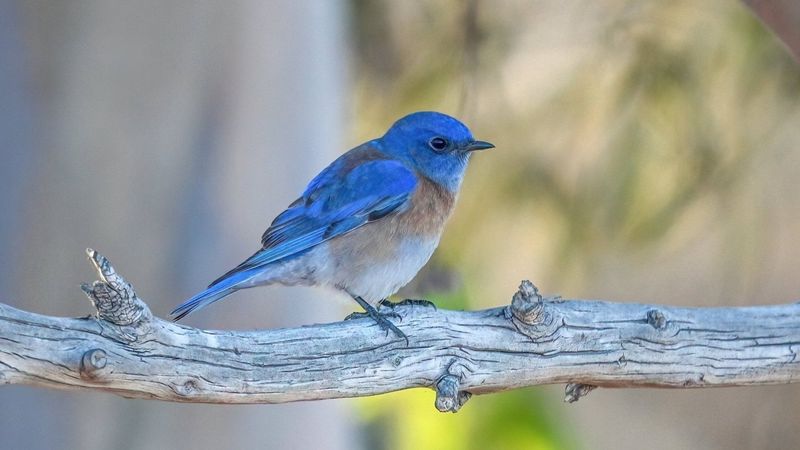
The Western Bluebird is a vibrant sight with its brilliant blue wings and orange chest. Commonly found in open woodlands and gardens, these birds are a joy to spot.
Bluebirds are cavity nesters, often using old woodpecker holes or artificial nest boxes. Their diet includes insects and berries, aiding in natural pest control.
Did you know? Western Bluebirds are known for their cooperative breeding behavior, where older siblings help care for new chicks, showcasing their strong family bonds.
American Goldfinch
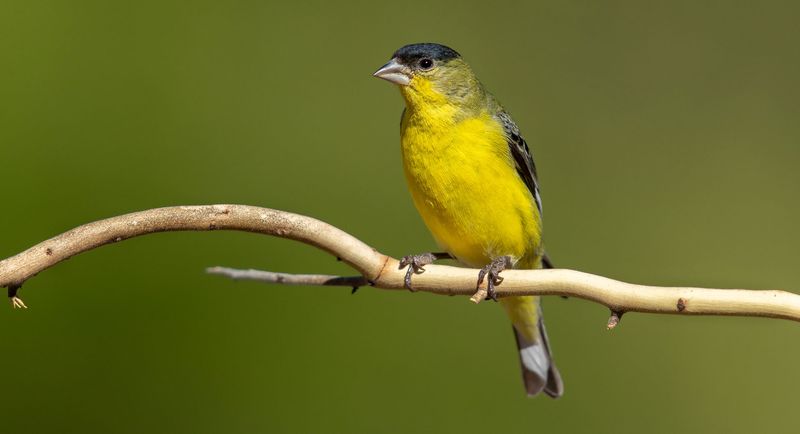
The American Goldfinch, with its bright yellow plumage, is a striking visitor to California’s feeders and gardens. Known for their undulating flight pattern, these birds are a joy to watch as they flit from plant to plant.
Goldfinches have a unique adaptation: they molt twice a year, changing their feathers for the seasons. Their diet mainly consists of seeds, particularly from thistles and sunflowers.
Fun fact: American Goldfinches are one of the latest nesting birds, often waiting until mid-summer to breed, which aligns with the peak abundance of their food sources.
Red-tailed Hawk
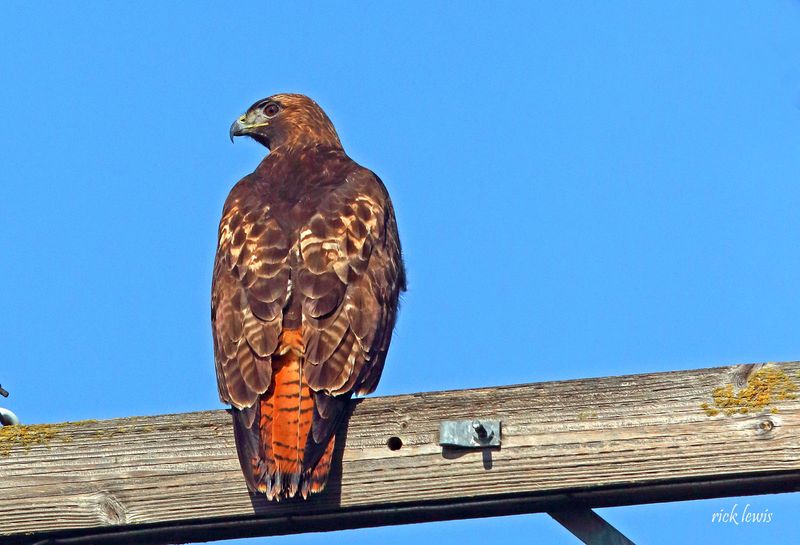
The Red-tailed Hawk is a common raptor seen gliding over California’s landscapes. With its distinctive reddish tail, it’s easy to identify. These hawks are powerful hunters, preying on rodents and small mammals.
They are often spotted perching on poles or trees, scanning for prey with their sharp eyesight. Known for their adaptability, they thrive in diverse habitats from deserts to urban areas.
Interesting tidbit: Their iconic scream is often used in movies to represent any bird of prey, even if the visual doesn’t match the sound.
Mourning Dove
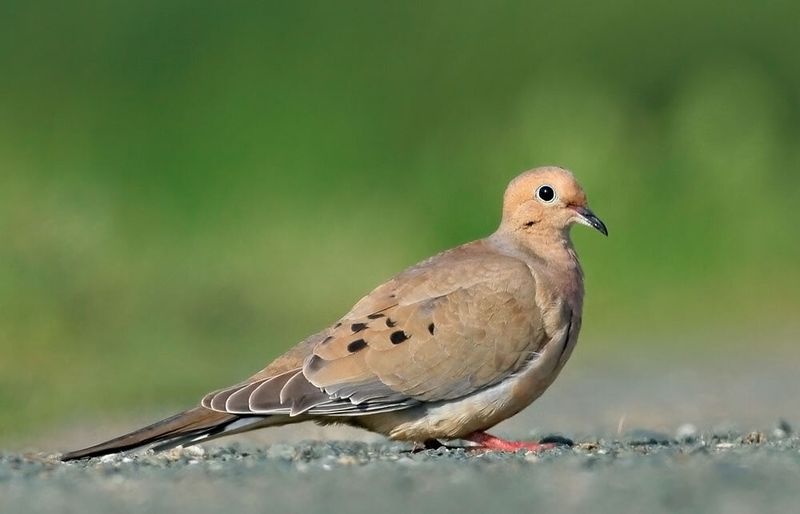
The gentle Mourning Dove is a familiar sight in California, with its soft cooing calls creating a serene atmosphere. Their slender bodies and pointed tails make them easy to recognize.
These birds are often seen perched on wires or foraging on the ground for seeds. Despite their delicate appearance, Mourning Doves are strong fliers, capable of rapid, direct flight.
Fun fact: Their common name comes from their mournful-sounding call, which is often mistaken for an owl’s hoot in the distance.
Northern Flicker
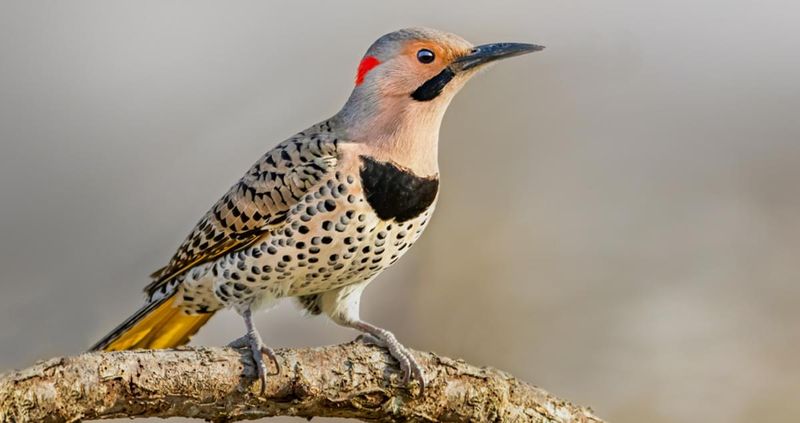
With its spotted plumage and distinctive call, the Northern Flicker is a woodpecker that stands out. Seen across California, these birds are unique for their habit of foraging on the ground.
Their diet includes ants and beetles, and they use their long tongues to extract insects from the soil. Flickers also drum on trees as a form of communication.
Did you know? Unlike other woodpeckers, Northern Flickers are migratory, moving with the seasons to find optimal feeding grounds and nesting sites.
Great Egret
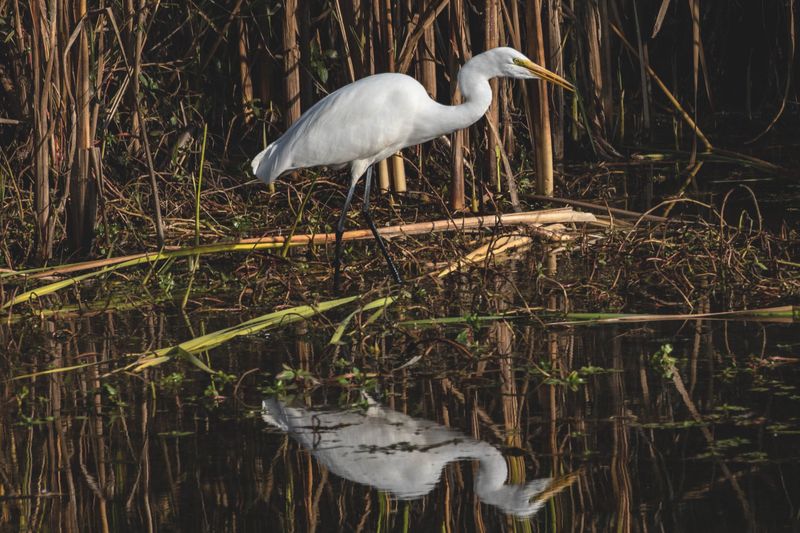
The Great Egret, with its stately presence, is often seen wading in California’s wetlands. Known for their graceful movements, these large birds hunt for fish and amphibians in shallow waters.
Egrets are recognizable by their long necks and legs, and their striking white plumage adds to their elegance. During breeding season, they grow delicate, feathery plumes.
A historical note: The Great Egret was nearly hunted to extinction for its feathers in the late 19th century, leading to important conservation movements.
Black Phoebe
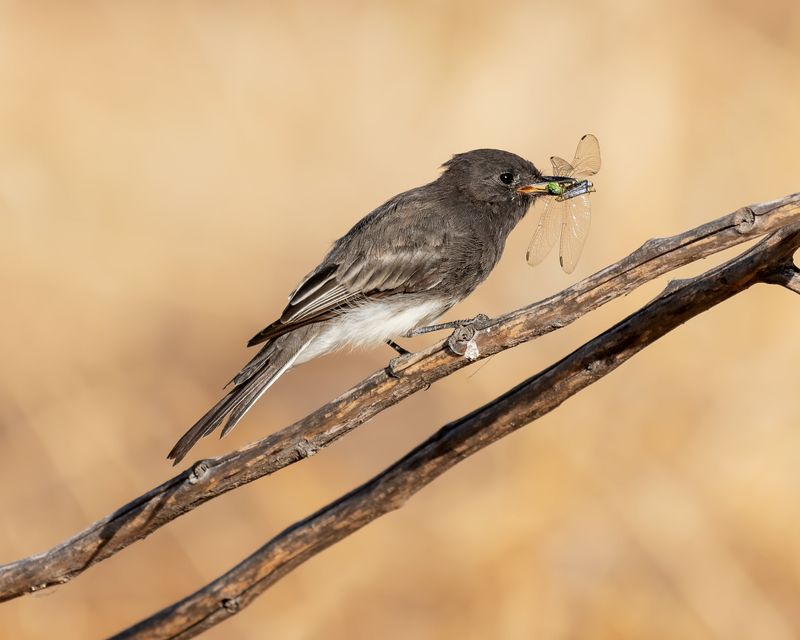
The Black Phoebe is a small, flycatcher bird commonly seen around California’s water bodies. With its black and white plumage, it stands out against its surroundings.
These birds are acrobatic fliers, often seen darting from perches to catch insects mid-air. Their presence is beneficial in controlling insect populations.
Interesting fact: Black Phoebes often return to the same nesting sites, year after year, showcasing their strong site fidelity and adaptability to human-altered environments.
Acorn Woodpecker
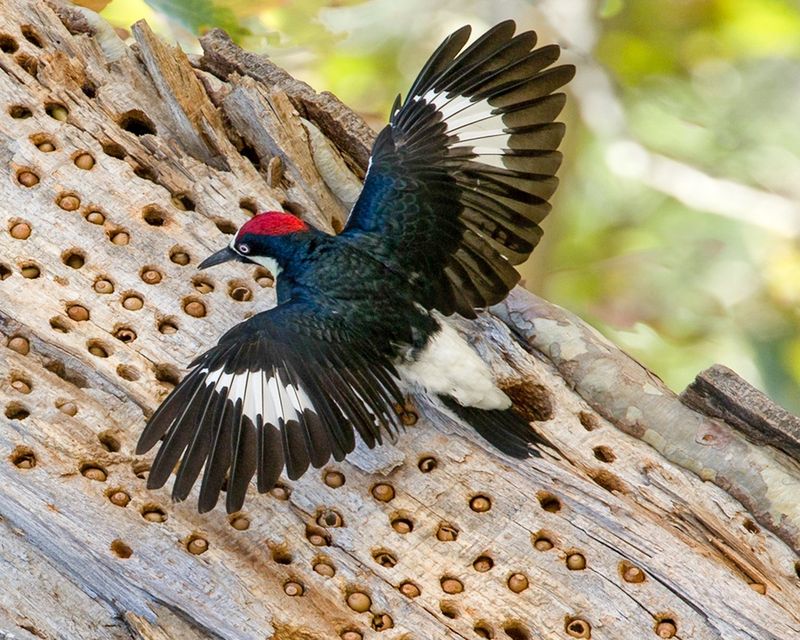
Known for their vibrant personalities, Acorn Woodpeckers are a fixture in California’s oak woodlands. These birds are famous for their ‘granary trees,’ where they store acorns in holes drilled into the bark.
Their clown-like faces make them easy to identify, and they are often heard before they are seen, thanks to their loud calls. Acorn Woodpeckers play a vital role in their ecosystems by spreading oak seeds.
Fun fact: These birds live in cooperative groups, with multiple individuals sharing the responsibility of raising young.
Barn Owl
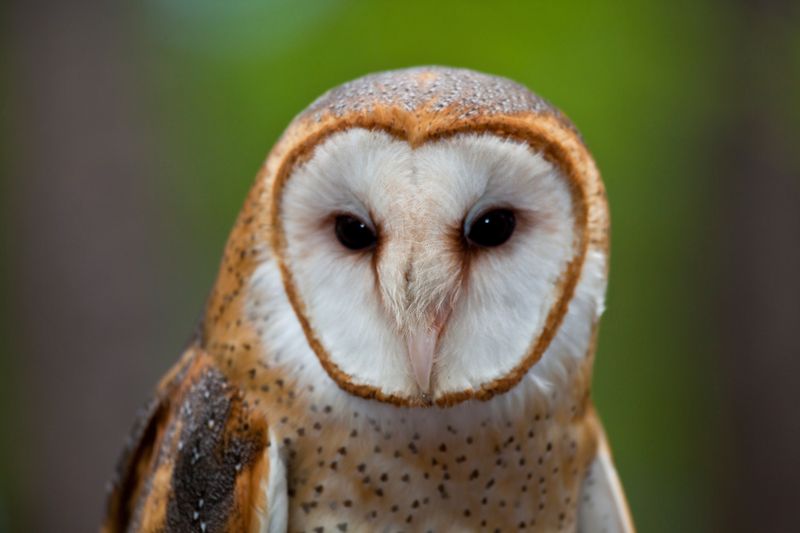
The ghostly Barn Owl is a nocturnal hunter, easily recognized by its heart-shaped face and silent flight. In California, they are often seen in open fields and grasslands, hunting for small rodents.
These owls are highly efficient predators, using their excellent hearing to locate prey in complete darkness. Their presence helps control pest populations.
An intriguing tidbit: Barn Owls have a global distribution, found on every continent except Antarctica, showcasing their adaptability and wide ecological niche.
Western Meadowlark
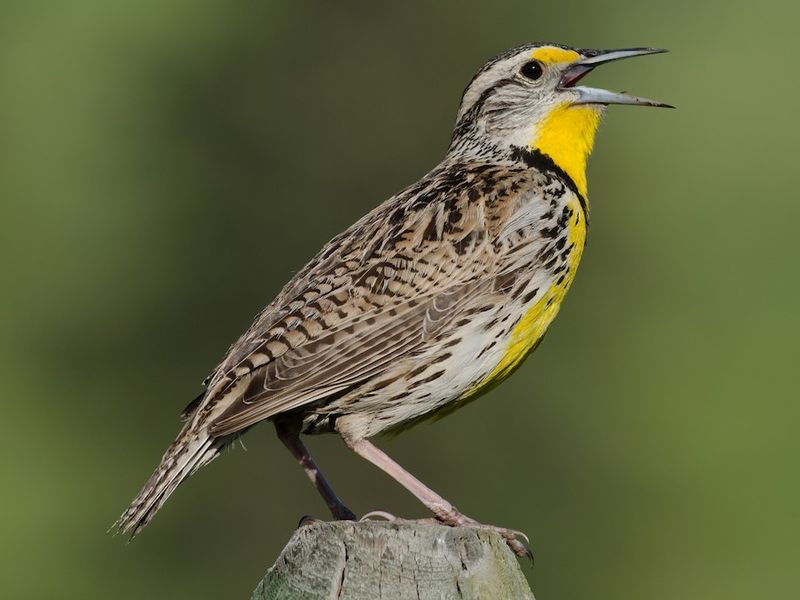
The Western Meadowlark is known for its vibrant yellow breast and melodious song that echoes across California’s open fields. These birds are ground foragers, often seen in prairies and grasslands.
Their diet includes insects and seeds, making them valuable for natural pest control. Meadowlarks have a distinctive flight pattern, with their wings producing a soft, fluttering sound.
Did you know? The Western Meadowlark is the state bird of six U.S. states, a testament to its widespread appeal and iconic status in American birdlife.
Snowy Egret
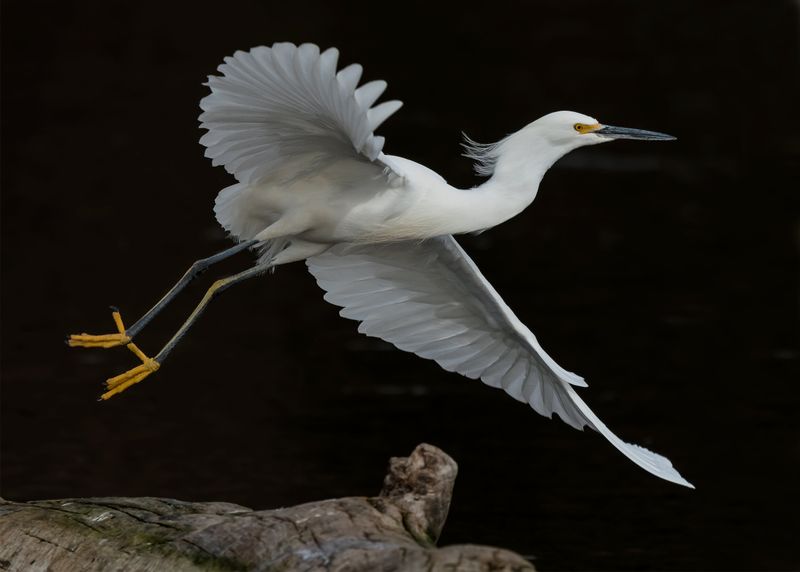
The elegant Snowy Egret, with its pristine white feathers, is often found in California’s wetlands. Known for their dance-like movements while foraging, they are a captivating sight.
Their diet mainly consists of fish and crustaceans, which they catch with quick, precise movements. Egrets have distinctive black legs and bright yellow feet, which are thought to help stir prey.
Fun fact: During the breeding season, Snowy Egrets develop delicate plumes on their heads and necks, which were once highly prized for fashion.
Scrub Jay
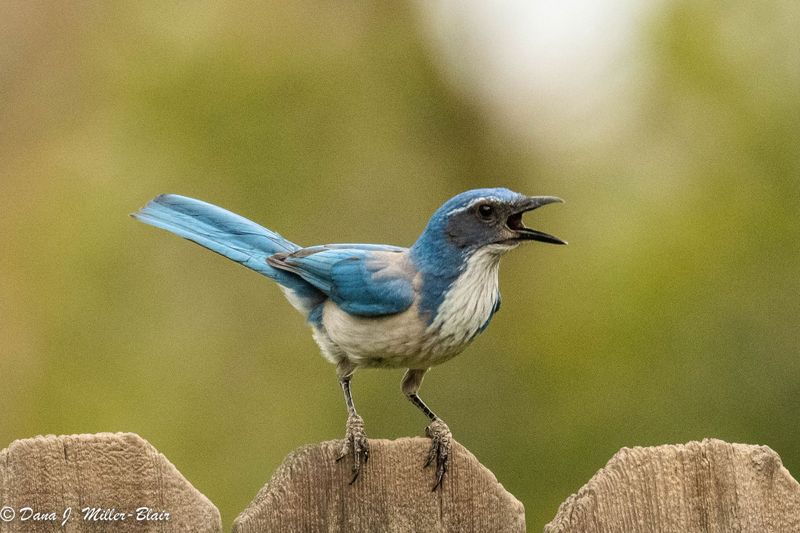
Scrub Jays are intelligent and curious birds, often seen in California’s chaparral and oak woodlands. Their striking blue and gray plumage makes them easy to spot.
These birds are known for their bold personalities and loud calls. They feed on insects, seeds, and fruits, playing a role in seed dispersal. Scrub Jays are also known for their complex social structures and problem-solving abilities.
Interesting tidbit: They have been observed planning for the future by caching food for later use, demonstrating advanced cognitive abilities.
Peregrine Falcon

The Peregrine Falcon, with its incredible speed and precision, is a top predator in California’s skies. Known as the fastest bird, they can reach speeds over 200 mph during a dive.
These falcons inhabit diverse environments, from coastal cliffs to urban skyscrapers, where they hunt pigeons and other birds. Their recovery from near extinction is a conservation success story.
Did you know? Peregrine Falcons have been used in falconry for over a thousand years, prized for their hunting prowess and trainability.
Common Yellowthroat
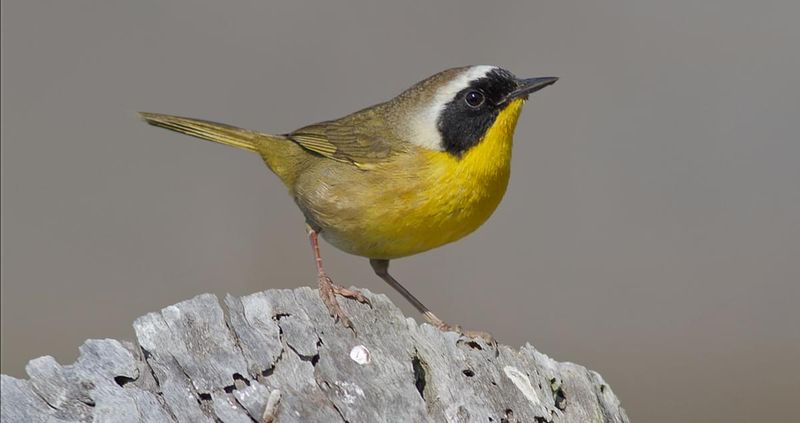
The Common Yellowthroat is a small warbler, easily recognized by its bright yellow throat and black mask. These birds thrive in wetland areas, where they forage for insects among the reeds.
Known for their distinctive “witchety-witchety-witchety” song, they add a lively soundscape to their habitats. Yellowthroats are migratory, arriving in California during spring and summer.
Fun fact: Despite their small size, these birds are long-distance travelers, journeying thousands of miles between their breeding and wintering grounds.
House Finch

House Finches are chatty and sociable birds common in California’s urban and suburban areas. Males are easily identified by their red heads and chests, while females are more subdued in color.
These birds adapt well to human presence, often nesting in eaves and ledges. Their varied diet includes seeds, fruits, and budding flowers.
Did you know? Originally native to the western United States, House Finches were introduced to the east and have since spread across much of North America, showcasing their adaptability.
Killdeer
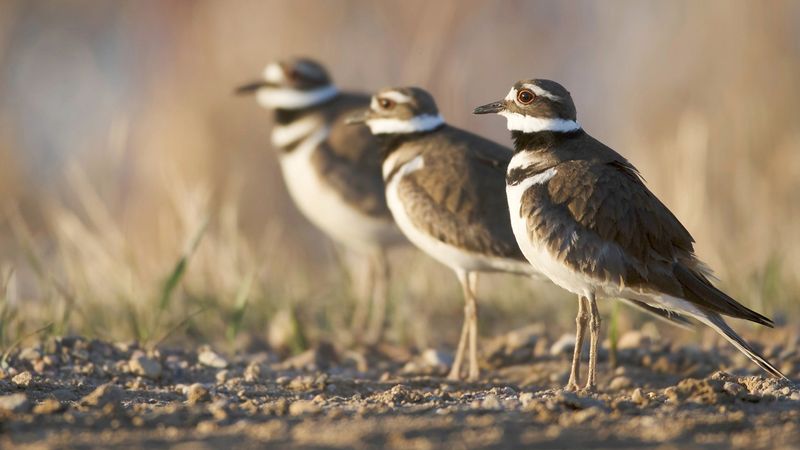
The Killdeer, a plover species, is often found in California’s open fields and shorelines. Known for its distinctive “kill-deer” call, it’s recognized by the two black bands across its chest.
These birds exhibit a fascinating “broken-wing” display to distract predators from their nests. They primarily feed on insects and are excellent runners.
Fun fact: Killdeers are named for their call, and their nests are simple scrapes in the ground, often placed in gravelly areas where they blend in seamlessly.
Steller’s Jay
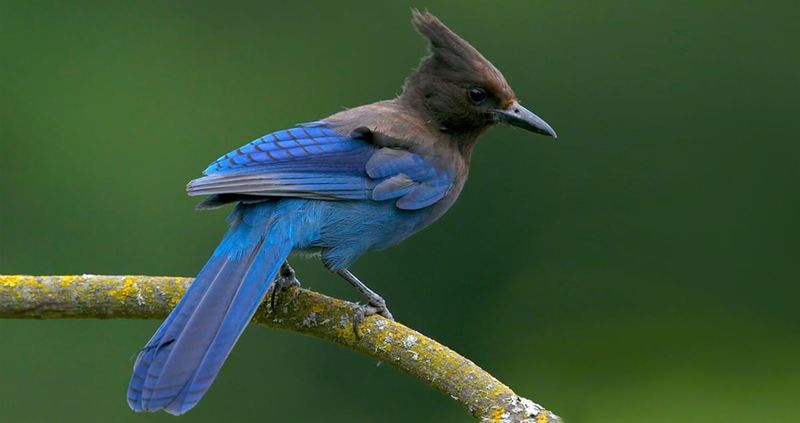
Steller’s Jays bring a splash of color to California’s coniferous forests with their bold blue and black plumage. Known for their loud calls and curious nature, these birds are often seen exploring campsites and picnic areas.
They are omnivorous, eating a variety of foods from seeds to small animals. Jays are also known for their intelligence and complex social interactions.
Interesting tidbit: Steller’s Jays are excellent mimics and have been known to imitate the calls of hawks, a tactic thought to deter other birds from their territory.

